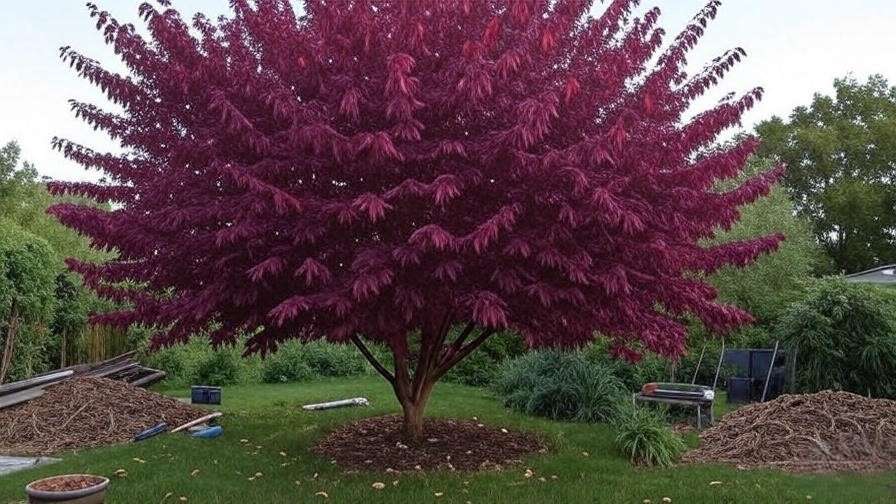Imagine transforming your garden with a tree that bursts into a symphony of purple-red hues every fall, stealing the show in your landscape. The purple ash tree (Fraxinus americana ‘Autumn Purple’) is that showstopper, blending vibrant beauty with resilience. Whether you’re a seasoned gardener or a beginner, this guide will empower you to grow and care for a purple ash tree with confidence. From planting tips to pest management, we’ll cover everything you need to ensure your tree thrives, drawing on decades of horticultural expertise and USDA-backed insights. Let’s dive into creating a stunning, eco-friendly addition to your garden! 🌿
1. What Is a Purple Ash Tree? 🌿
1.1 Overview of the Purple Ash Tree (Fraxinus americana ‘Autumn Purple’)
The purple ash tree, a cultivar of the white ash (Fraxinus americana), is a deciduous beauty celebrated for its breathtaking fall foliage. Its leaves transition from lush green to vibrant purple-red, making it a focal point in any garden. Reaching heights of 40-60 feet and a spread of 30-50 feet at maturity, this tree offers ample shade and elegance. Its compound leaves, typically 8-12 inches long, feature 7-9 leaflets, creating a feathery texture. Native to eastern North America, the purple ash thrives in USDA Hardiness Zones 3-9, showcasing adaptability to various climates. 🌞
As a horticulturist with over 20 years of experience, I’ve seen purple ash trees elevate landscapes with their seasonal drama and ecological benefits. They support local wildlife, including birds and pollinators, and contribute to air purification through carbon sequestration. According to the USDA Forest Service, ash trees like this one are vital for urban forestry due to their resilience and aesthetic appeal.
1.2 Why Choose a Purple Ash Tree for Your Garden?
Why plant a purple ash tree? Beyond its stunning fall colors, it offers practical benefits. It provides cooling shade in summer, reducing energy costs, and its robust root system helps stabilize soil. Compared to other ash varieties, such as green ash (Fraxinus pennsylvanica), the ‘Autumn Purple’ cultivar stands out for its richer foliage color and disease resistance. It’s versatile, fitting into urban yards, rural landscapes, or even large containers with proper care. For gardeners seeking a low-maintenance yet visually striking tree, this is a top choice. 🌳
Tip: If you’re torn between ash varieties, the purple ash’s vibrant fall display gives it an edge over the more subdued white ash. Consult your local nursery for cultivar availability.
2. Planting Your Purple Ash Tree 🌱
2.1 Choosing the Right Location
Selecting the perfect spot is critical for your purple ash tree’s success. This tree thrives in full sun, requiring at least 6 hours of direct sunlight daily to fuel its growth and vibrant foliage. Soil-wise, it prefers well-drained, loamy soil with a pH of 6.0-7.5. Heavy clay or waterlogged soils can stunt growth or cause root rot, so test your soil beforehand. The USDA Natural Resources Conservation Service offers free soil testing resources to ensure compatibility.
Consider the tree’s mature size—up to 60 feet tall and 50 feet wide. Plant it at least 15-20 feet from buildings, power lines, or other trees to avoid overcrowding. A spacious location ensures proper air circulation, reducing disease risk. 🌬️
Expert Tip: Use a soil pH testing kit (available at garden centers) to confirm your site’s suitability. Adjust acidic soils with lime if needed, following extension service guidelines.
2.2 Best Time to Plant
Timing is everything for a healthy purple ash tree. Early spring or fall is ideal, as cooler temperatures allow roots to establish without summer heat stress. In USDA Zones 3-5, spring planting gives roots a head start before winter. In warmer Zones 6-9, fall planting leverages mild weather for growth. Avoid planting during extreme heat or freezing conditions, as these stress young trees.
For example, a Zone 6 gardener might plant in mid-October, ensuring 6-8 weeks of root growth before frost. Check your local frost dates via the National Gardening Association for precise timing. 📅
2.3 Step-by-Step Planting Guide
Follow these steps to plant your purple ash tree like a pro:
- Dig the Hole: Create a hole twice as wide and as deep as the root ball (e.g., 24 inches wide for a 12-inch root ball). This loosens soil for root expansion.
- Amend the Soil: Mix native soil with 20-30% organic compost to boost nutrients and drainage. Avoid heavy fertilizers at planting to prevent root burn.
- Position the Tree: Place the tree so the root flare (where roots meet the trunk) sits slightly above ground level. This prevents rot.
- Backfill and Water: Fill the hole, tamping soil gently to remove air pockets. Water deeply (1-2 gallons for a young tree) to settle the soil.
- Mulch: Apply 2-4 inches of organic mulch (e.g., wood chips or bark) around the base, keeping it 2 inches from the trunk to avoid rot.
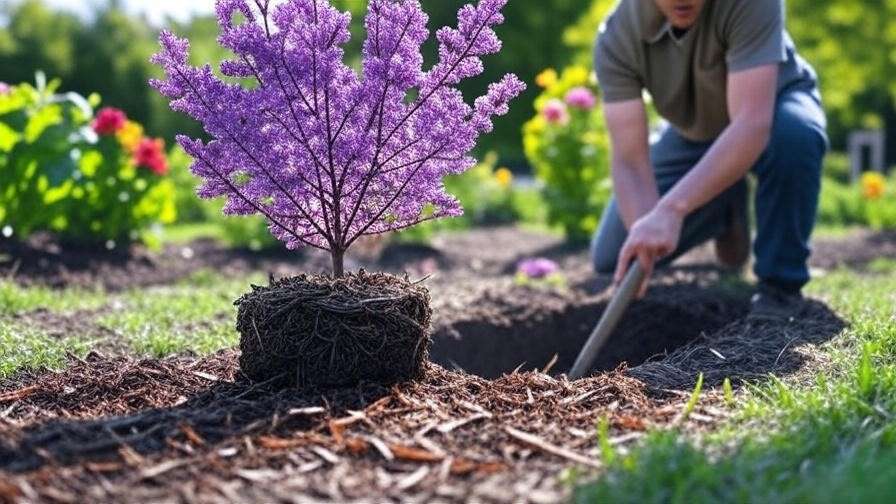
Pro Tip: Stake young trees in windy areas to stabilize them for the first year, but remove stakes after 12 months to encourage strong root development. 🌱
3. Caring for Your Purple Ash Tree 🌞
3.1 Watering Requirements
Proper watering is crucial, especially in the first year. Water young purple ash trees deeply (1-2 inches of water) 1-2 times per week, depending on rainfall. Use a soaker hose or drip irrigation for even distribution. Established trees (after 2-3 years) are drought-tolerant but benefit from supplemental watering during prolonged dry spells—about 10 gallons per inch of trunk diameter every 10-14 days.
A common mistake is overwatering, which leads to yellowing leaves or fungal issues. Check soil moisture 2-3 inches deep; water only if dry. The University of Minnesota Extension notes that consistent moisture in the first year boosts survival rates by 30%. 💧
3.2 Fertilizing for Optimal Growth
Fertilize your purple ash tree in early spring before new growth begins. Use a balanced, slow-release fertilizer like 10-10-10 NPK at a rate of 1 pound per inch of trunk diameter, spread evenly under the canopy. Avoid high-nitrogen fertilizers, which promote weak, pest-prone growth. For organic options, composted manure or fish emulsion works well.
Research from Purdue University Extension shows that proper fertilization can increase ash tree growth rates by up to 15%. Test soil every 2-3 years to monitor nutrient levels and adjust as needed. 🌿
3.3 Pruning and Maintenance
Pruning keeps your purple ash tree healthy and shapely. Prune in late winter or early spring before buds break to minimize stress. Focus on:
- Removing dead, damaged, or crossing branches.
- Shaping the canopy for balanced growth and air circulation.
- Thinning dense areas to reduce disease risk.
Use sanitized, sharp pruning shears or loppers to make clean cuts at a 45-degree angle. For large branches, hire a certified arborist to avoid injury or tree damage. The International Society of Arboriculture recommends pruning no more than 25% of the canopy annually to maintain vigor. ✂️
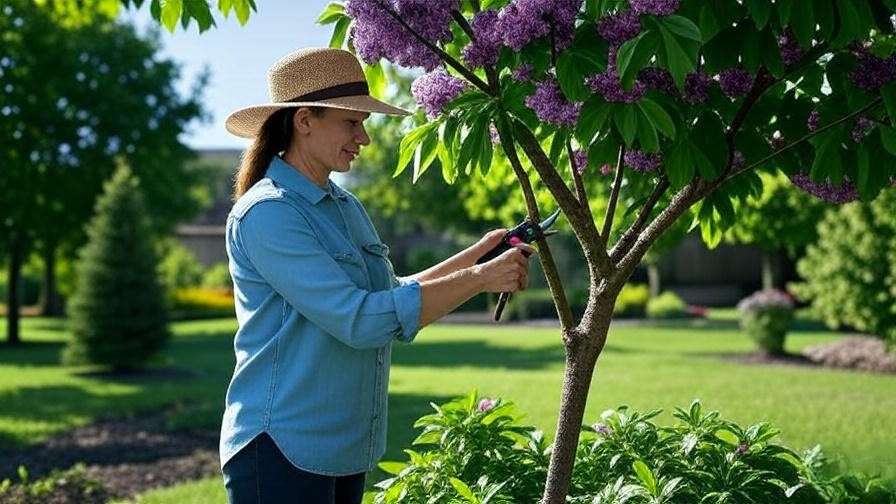
Visual Idea: Include a diagram in the final article showing proper pruning cuts for ash trees.
3.4 Mulching and Soil Care
Mulching is a game-changer for purple ash trees. A 2-4 inch layer of organic mulch (e.g., bark, wood chips, or straw) retains moisture, suppresses weeds, and regulates soil temperature. Keep mulch 2 inches from the trunk to prevent rot and pest issues. Refresh mulch annually in spring.
Avoid “volcano mulching” (piling mulch against the trunk), which traps moisture and invites fungi. The Arbor Day Foundation warns that improper mulching is a leading cause of tree stress. Check soil drainage regularly, as compacted or soggy soil can harm roots. 🌱
4. Common Problems and Solutions 🐛
4.1 Pests Affecting Purple Ash Trees
The purple ash tree, while resilient, faces threats from pests, with the emerald ash borer (EAB) being the most notorious. This invasive beetle, identified by its metallic green body, burrows into the bark, disrupting nutrient flow. Signs include thinning canopies, D-shaped exit holes, and bark splitting. According to the USDA Forest Service, EAB has affected millions of ash trees across North America. Preventive treatments, like systemic insecticides (e.g., imidacloprid), applied by certified arborists in early spring, can protect healthy trees. Regular monitoring is key—check trunks and branches monthly during growing season.
Other pests include aphids, which cause leaf curling and sticky residue, and scale insects, appearing as small, waxy bumps on branches. Control these with insecticidal soap or neem oil, applied in early morning or evening to avoid leaf burn. For organic gardeners, introducing natural predators like ladybugs can reduce aphid populations. The University of Wisconsin Extension recommends integrated pest management (IPM) for sustainable control, combining monitoring, cultural practices, and targeted treatments. 🐞
Expert Advice: Contact your local cooperative extension for EAB-resistant cultivars or region-specific pest management plans. Early detection can save your tree.
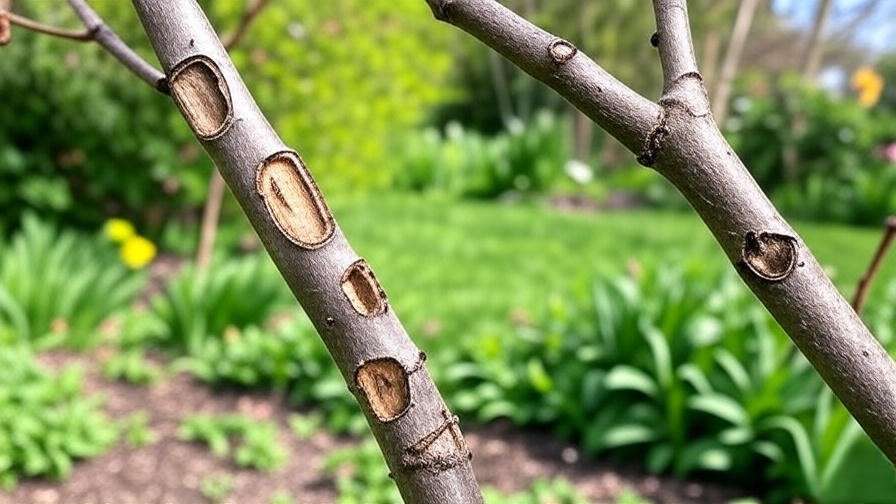
4.2 Diseases to Watch For
Purple ash trees are susceptible to fungal diseases like anthracnose, marked by dark leaf spots, premature leaf drop, and wilting. Wet spring conditions exacerbate this issue. To manage, rake and dispose of fallen leaves to reduce fungal spores, and apply a copper-based fungicide in early spring if symptoms persist. Verticillium wilt, caused by soil-borne fungi, leads to wilting branches and yellowing leaves. There’s no cure, but improving soil drainage and removing affected branches can slow progression. The Ohio State University Extension emphasizes proper sanitation to prevent disease spread.
To bolster resistance, ensure proper spacing (15-20 feet between trees) for air circulation and avoid overhead watering, which spreads fungal spores. If planting multiple ash trees, consider disease-resistant hybrids recommended by your local nursery. 🩺
Prevention Tip: Sterilize pruning tools with a 10% bleach solution between cuts to avoid cross-contamination.
4.3 Environmental Stressors
Purple ash trees are moderately drought-tolerant once established, but prolonged dry spells can stress them, leading to leaf scorch or stunted growth. Water deeply (10-15 gallons per inch of trunk diameter) every 10-14 days during drought. Young trees are especially vulnerable to winter damage, such as frost cracks or wind desiccation. Wrap trunks with burlap or tree guards in late fall, especially in USDA Zones 3-5, to shield against freezing temperatures. The University of Minnesota Extension reports that winter protection can increase young tree survival by 25%.
Urban stressors like compacted soil or pollution can also affect growth. Aerate soil annually around the root zone and avoid planting near heavily trafficked areas. If you notice yellowing leaves or slow growth, test soil for nutrient deficiencies or compaction. 🌬️
Pro Tip: In windy regions, install a windbreak (e.g., shrubs or fencing) to protect young trees during their first 2-3 years.
5. Seasonal Care Tips for Purple Ash Trees 🍂
5.1 Spring: Kickstarting Growth
Spring is the season to set your purple ash tree up for success. Inspect for winter damage, such as cracked bark or broken branches, and prune as needed. Apply a slow-release fertilizer (10-10-10 NPK) to fuel new growth. Monitor for early pest activity, especially EAB larvae, by checking for small holes or sawdust-like frass at the base. Water consistently to support budding, aiming for 1 inch of water per week if rainfall is scarce. A soil moisture meter can help gauge needs accurately. 🌸
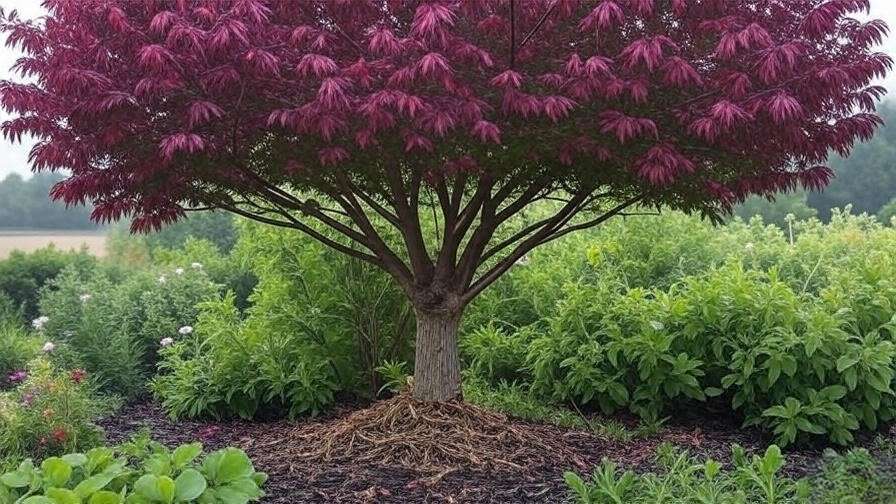
5.2 Summer: Maintaining Vigor
Summer demands vigilance to keep your purple ash thriving. During heatwaves, deep water every 7-10 days to prevent leaf scorch. Check for pests like aphids or scale, and treat promptly with organic sprays if needed. Mulch should be refreshed if it’s thinning—maintain a 2-4 inch layer to conserve moisture. Watch for signs of stress, such as wilting or yellowing leaves, which may indicate under-watering or nutrient deficiencies. A mid-summer soil test can guide adjustments. ☀️
5.3 Fall: Preparing for Dormancy
Fall is when the purple ash tree shines with its vibrant purple-red foliage. Celebrate this display by photographing your tree for garden records or social media! Rake fallen leaves promptly to prevent fungal diseases like anthracnose. Reduce watering as the tree enters dormancy, but ensure one deep watering (10-15 gallons) before the first frost to hydrate roots. For young trees, apply a fresh mulch layer to insulate roots against temperature swings. 🍁
Engagement Idea: Share your purple ash’s fall colors on social media with #PurpleAshPride to connect with other gardeners!
5.4 Winter: Protecting Your Tree
Winter care focuses on protection. For trees under 3 years old, wrap trunks with burlap or commercial tree wraps to prevent frost cracks and sunscald. Avoid heavy pruning during dormancy, as it can stress the tree. Check mulch levels to ensure roots stay insulated, and clear snow buildup from branches to prevent breakage. In colder zones (3-5), consider a windbreak to shield against harsh winds. The Arbor Day Foundation notes that proper winter care can extend ash tree lifespans by 10-15 years. ❄️
6. Enhancing Your Landscape with Purple Ash Trees 🌸
6.1 Companion Planting Ideas
Purple ash trees pair beautifully with companion plants that complement their stature and color. Underplant with low-growing shrubs like boxwood or hydrangeas for a layered look. Perennials such as hostas, daylilies, or coneflowers add color without competing for root space. For a pollinator-friendly garden, include bee balm or lavender, which attract bees and butterflies that benefit from the ash’s canopy.
Design-wise, use the purple ash as a focal point in a large lawn or as a privacy screen along property lines. A sample layout might place the tree centrally, flanked by two hydrangeas and a border of hostas, creating a balanced, inviting garden. Consult the National Gardening Association for companion planting guides tailored to your region. 🌼
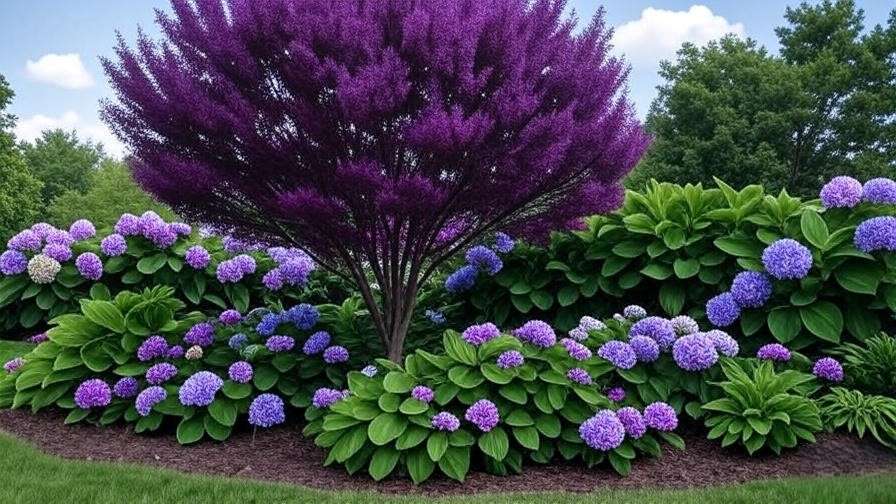
6.2 Eco-Friendly Benefits
Purple ash trees are eco-warriors. They provide habitat for birds (e.g., cardinals, woodpeckers) and pollinators, boosting biodiversity. Their dense canopy reduces urban heat islands, lowering local temperatures by up to 5°F, per EPA studies. Additionally, they sequester carbon, with a mature ash tree absorbing roughly 48 pounds of CO2 annually, according to the USDA Forest Service. Planting a purple ash contributes to cleaner air and a healthier planet. 🌍
Expert Insight: Urban planners often recommend ash trees for city landscapes due to their shade and pollution tolerance, making them ideal for sustainable gardening.
7. FAQs About Purple Ash Tree Care ❓
- Q1: How fast does a purple ash tree grow?
A: It grows moderately at 1-2 feet per year under ideal conditions (full sun, well-drained soil, proper care). Growth slows in poor soil or shade. - Q2: Are purple ash trees resistant to emerald ash borer?
A: No, they’re not fully resistant. Preventive treatments like insecticides and regular monitoring are essential. Consult your local extension for EAB management plans. - Q3: Can I grow a purple ash tree in a small yard?
A: Yes, with pruning to control size. Plant at least 15 feet from structures and use dwarf cultivars if space is tight. - Q4: What’s the best way to propagate a purple ash tree?
A: Propagation is complex, typically via seed or grafting. For best results, purchase saplings from reputable nurseries or consult an arborist. - Q5: How do I know if my purple ash tree is healthy?
A: Look for vibrant green leaves in spring/summer, robust growth, and no signs of pests (e.g., holes, frass). Yellowing or wilting may indicate stress.
8. Expert Tips for Long-Term Success 🌟
- Monitor Soil Health: Test soil every 2-3 years to track pH and nutrients. Adjust with lime or sulfur as needed, per USDA guidelines.
- Stay Proactive: Early pest and disease detection can save your tree. Monthly inspections during growing season are a must.
- Community Resources: Join local arborist groups or extension programs for tailored advice. The International Society of Arboriculture offers online forums for tree enthusiasts.
- Case Study: A homeowner in Ohio transformed their yard with a purple ash tree by following a strict watering and pruning schedule, resulting in a 50-foot specimen with stunning fall colors within 10 years. Their secret? Consistent care and EAB monitoring. 🌳
Conclusion 🌳
Growing a purple ash tree is a rewarding journey that brings vibrant beauty and ecological benefits to your garden. By choosing the right location, planting correctly, and following seasonal care routines, you’ll nurture a tree that thrives for decades. Stay vigilant against pests like the emerald ash borer and diseases like anthracnose, using expert-backed strategies to protect your investment. With this comprehensive guide, you’re equipped to create a stunning landscape centerpiece. Start your purple ash tree journey today, and share your progress in the comments or on social media with #PurpleAshPride! 🌟

